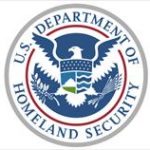 WASHINGTON — The Transportation Security Administration has completed its review of 28 airport access control recommendations provided to the agency by the Aviation Security Advisory Committee (ASAC) at the request of Secretary Jeh C. Johnson, Department of Homeland Security.
WASHINGTON — The Transportation Security Administration has completed its review of 28 airport access control recommendations provided to the agency by the Aviation Security Advisory Committee (ASAC) at the request of Secretary Jeh C. Johnson, Department of Homeland Security.
The recommendations are the result of a comprehensive review conducted over the course of three months. In January 2015, Johnson asked the ASAC to determine if additional risk-based security measures, resource reallocations, new investments or policy changes are necessary to address the potential insider threat vulnerability at U.S. airports.
As noted in the report, “the recommendations were developed within the context of Risk-Based Security (RBS), a holistic approach to aviation security endorsed throughout every level of the Department of Homeland Security (DHS).”
RBS has proven to be a significantly better system than a one-size-fits-all system because it enables better allocation of resources and it focuses on identifying those with intentions to harm persons and/or property.
“I am deeply grateful to the Aviation Security Advisory Committee for their work developing these recommendations,” said Peter Neffenger, TSA Administrator. “They are instrumental in mitigating the potential insider threat vulnerability at our airports.”
ASAC provided their recommendations to TSA April 8. TSA took five immediate steps in response to the ASAC’s report:
- Requiring increased frequency of criminal history records checks.
- Requiring all airport and airline employees traveling as passengers to be screened by TSA prior to travel.
- Requiring airports to reduce the number of access points to an operational minimum.
- Subjecting airport employees to additional randomized screening throughout the workday.
- Advancing a culture of situational awareness for all airport employees through a promotional campaign, “This is My Airport.”
In addition, TSA is beginning a phased implementation approach for FBI Rap Back with an aviation pilot using Dallas-Fort Worth International Airport, Boston Logan International Airport, and Delta Air Lines. The program will enable real time criminal history monitoring of the aviation worker population. Rap Back is part of the FBI’s Next Generation Identification Program, introduced in September 2014.
TSA fully concurs with 26 and partially concurs with two of the recommendations. Statutory limitations in one instance, and the need to conduct a detailed cost-benefit analysis locally in another, are the reasons for the partial concurrence of two recommendations.
The agency is acting on all 28 of the ASAC recommendations and has set a definitive schedule for assessing and reporting the results on actions taken based on the recommendations.
Four of the recommendations are closed:
- TSA has shifted resources to increase random screening of aviation workers.
- TSA, in collaboration with industry, has identified biometric standards for access control.
- TSA has identified its enforcement authority for instances of non-compliance with airport badge accountability requirements.
- TSA has initiated a security awareness campaign (“This is My Airport”) that offers an anonymous 24/7 tip line for employees at airports nationwide.
The other 24 recommendations are open and are the subject of ongoing activity by TSA with identified milestones.
TSA’s actions resulting from the study and implementation of the ASAC recommendations are intended to reduce opportunities to participate in misconduct for the few aviation workers who intend to do so. The actions will increase TSA’s ability to ensure that access to secure areas is only granted to those who should have it and is denied to those who shouldn’t. Finally, they will increase every aviation worker’s expectation that all workers will be subject to screening at some unexpected point during the workday.
TSA is working with ASAC to:
- Increase and improve communication and coordination among agencies and industry partners.
- Gain faster and ongoing access to the right information.
- Share the right information and intelligence with the right partners on technical platforms that those partners can use.
- Train partners to maximize the use of the information while protecting civil rights.
- Continue to reduce access points into secure areas to the minimum.
- Increase random checks at access points and throughout the workplace.
- Use technology to channel employees to unpredictable checks.
- Use technology to enforce adherence to the standards.
- Use information and training tools to ensure everyone understands the rules and their enforcement.
- Provide tools to report suspicious behavior.
- Encourage, reward and publicize employee security awareness and engagement publicizing the report.
TSA will continue to work with the ASAC to strengthen the overall security of our commercial aviation network and mitigate the potential insider-threat posed by aviation workers.
The agency will provide the ASAC with regular updates on progress associated with all open recommendations until each is closed.
Related News
- Colorado Transit Worker Safety Bill (House Bill 25-1290)
- Chairman Pauli Announces Retirement, SMART-TD celebrates his career
- New Mexico Local 1687 sets new precedent with Red Apple Transit
- Tentative Agreement Reached With TransitAmerica Services (TASI)
- New CSX conductor improvises to save a life
- SMART News: Protecting Railroad Retirees’ Future
- More Than a Story: SMART-TD’s Women’s History Month Highlights Legacies in the Making
- Tentative Agreement Reached in Boston
- Assembly, No. 1672
- Historic short-line agreement proves workers are stronger with SMART-TD at their side